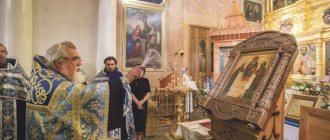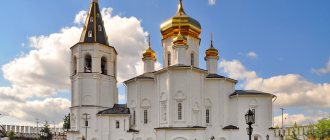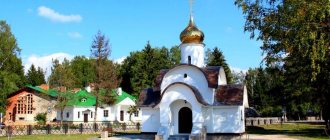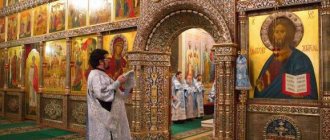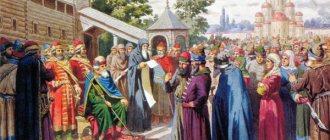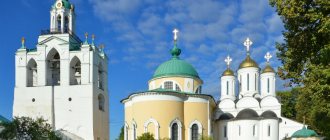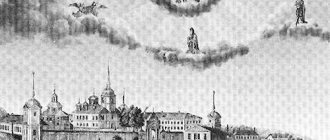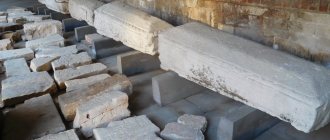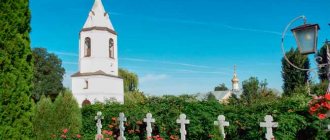Mir
Russia Vladimir Region Murom Spaso-Preobrazhensky Monastery (Murom) Map is loading…
{"format":"leaflet","minzoom":false,"maxzoom":false,"limit":50,"offset":0,"link":"all","sort":[""], "order":[],"headers":"show","mainlabel":"","intro":"","outro":"","searchlabel":"\u2026 \u0441\u043b\u0435\ u0434\u0443\u044e\u0449\u0438\u0435 \u0440\u0435\u0437\u0443\u043b\u044c\u0442\u0430\u0442\u044b","default":"","import-annotation":false,"width ":"auto","height":"350px","centre":{"text":"","title":"""link":"""lat":55.57278000000000162117430591024458408355712890625,"lon": 42.06611000000000188947524293325841426849365234375,"icon":""},"title":"","label":"","icon":"","lines":[],"polygons":[],"circles":[ ],"rectangles":[],"copycoords":false,"static":false,"zoom":8,"defzoom":14,"layers":["OpenStreetMap"],"image layers":[] ,"overlays":[],"resizable":false,"fullscreen":true,"scrollwheelzoom":true,"cluster":false,"clustermaxzoom":9,"clusterzoomonclick":true,"clustermaxradius":80, "clusterspiderfy":true,"geojson":"","clicktarget":"","showtitle":true,"hidenamespace":false,"template":"","userparam":"","activeicon": "","pagelabel":false,"ajaxcoordproperty":"","ajaxquery":"","locations":[{"text":"\u003Cb\u003E\u003Ca href=\"/palomnik/%D0% A1%D0%BF%D0%B0%D1%81%D0%BE-%D0%9F%D1%80%D0%B5%D0%BE%D0%B1%D1%80%D0%B0%D0%B6 %D0%B5%D0%BD%D1%81%D0%BA%D0%B8%D0%B9_%D0%BC%D0%BE%D0%BD%D0%B0%D1%81%D1%82%D1 %8B%D1%80%D1%8C_(%D0%9C%D1%83%D1%80%D0%BE%D0%BC)\» title=\»\u0421\u043f\u0430\u0441\u043e-\ u041f\u0440\u0435\u043e\u0431\u0440\u0430\u0436\u0435\u043d\u0441\u043a\u0438\u0439 \u043c\u043e\u043d\u0430\u0441\u0442\u04 4b\u0440\u044c (\u041c\u0443 \u0440\u043e\u043c)\»\u003E\u0421\u043f\u0430\u0441\u043e-\u041f\u0440\u0435\u043e\u0431\u0440\u0430\u0436\u0435\u043d\u044 1\u043a\u0438\u0439 \u043c\u043e\u043d\u0430\u0441\u0442\u044b\u0440\u044c (\u041c\u0443\u0440\u043e\u043c)\u003C/a\u003E\u003C/b\u003E\u003Chr /\ u003E\u003Ca href =\"/palomnik/%D0%A1%D0%B2%D0%BE%D0%B9%D1%81%D1%82%D0%B2%D0%BE:%D0%90%D0%BD%D0% BD%D0%BE%D1%82%D0%B0%D1%86%D0%B8%D1%8F\" title=\"\u0421\u0432\u043e\u0439\u0441\u0442\u0432\u043e:\u0410 \u043d\u043d\u043e\u0442\u0430\u0446\u0438\u044f\»\u003E\u0410\u043d\u043d\u043e\u0442\u0430\u0446\u0438\u044f\u003C/a\u003 E: "'\u041c\ u0443\u0301\u0440\u043e\u043c\u0441\u043a\u0438\u0439 \u0421\u043f\u0430\u0301\u0441\u043e-\u041f\u0440\u0435\u043e\u0431\u0 440\u0430\u0436\u0435\u0301 \u043d\u0441\u043a\u0438\u0439 \u043c\u043e\u043d\u0430\u0441\u0442\u044b\u0301\u0440\u044c"' (\u00ab\u0421\u043f\u0430\u0301 \u0441\u0441\u043a\ u0438\u0439 \u0447\u0442\u043e \u043d\u0430 \u0411\u043e\u0440\u0443\u0301\u00bb) \u2014 \u043c\u0443\u0436\u0441\u043a\u043e \u0439 \u043c\u043e\u043d\u0430 \u0441\u0442\u044b\u0440\u044c \u041c\u0443\u0440\u043e\u043c\u0441\u043a\u043e\u0439 \u0435\u043f\u0430\u0440\u0445\u0438\ u0438\u0420\u0443\u0441\u0441 \u043a\u043e\u0439 \u043f\u0440\u0430\u0432\u043e\u0441\u043b\u0430\u0432\u043d\u043e\u0439 \u0446\u0435\u0440\u043a\u0432\ u0438,\u0440\u0430\u0441\ u043f\u043e\u043b\u043e\u0436\u0435\u043d\u043d\u044b\u0439 \u0432 \u0433\u043e\u0440\u043e\u0434\u0435 \u041c\u0443\u0440\u 043e\u043c\u0435,\u043d\u0430 """title":"\u042 1\u043f\u0430 \u0441\u043e-\u041f\u0440\u0435\u043e\u0431\u0440\u0430\u0436\u0435\u043d\u0441\u043a\u0438\u0439 \u043c\u043e\u043d\u0430\ u0441\u0442\u044b\u0440\ u044c (\u041c\u0443\u0440\u043e\u043c)","link":"","lat":55.57278000000000162117430591024458408355712890625,"lon":42.066110000000001889 47524293325841426849365234375,"icon":""}],,"imageLayers":[]}
55.57235; 42.054055
Russia, Vladimir region, Murom, Center microdistrict
Murom, Vladimir region
Russia
Telephone
: +7 492 343-14-76
Email:
Murom Spaso-Preobrazhensky Monastery
(“Spassky on Bor”) is a monastery of the Murom diocese of the Russian Orthodox Church, located in the city of Murom, on the left bank of the Oka River.
History[edit]
Local tradition, recorded in several copies of the 16th-century monument “The Tale of the Establishment of Christianity in Murom,” connects the founding of the monastery with the Murom prince Gleb Vladimirovich (no later than 1015). The appearance of the monastery at the turn of the 10th-11th centuries is firmly established in Russian historiography, although there are other points of view on the time of the appearance of the monastery.
In the middle of the 16th century, after the successful campaign of Ivan IV the Terrible against Kazan, several stone churches were erected in Murom by order of the tsar, including the main cathedral of the Transfiguration Monastery.
The beginning of the economic prosperity of the Spassky Monastery is also associated with the name of Tsar Ivan the Terrible. Having endowed the monastery with extensive estates, the king also established a “dormitory” in it. In the Murom inventories of 1624 and 1636-1637, the monastery is listed as a “sovereign building,” which confirms the active participation in the life of the monastery of representatives of the reigning house.
In 1616, Murom was attacked by an armed Lithuanian detachment under the command of Pan Alexander Lisovsky, during which the Spassky Monastery was also damaged.
During the period of church reforms, Patriarch Nikon Murom rejected innovations for a significant time, and the Spassky Monastery was one of the strongholds of the Old Believers. The rector of the monastery, Archimandrite Anthony (1658-1662), wrote several appeals about the ordination, and also sent a petition to Tsar Alexei Mikhailovich with indications of infidelity in the correction of books under Patriarch Nikon, adding that those who are unable to expose infidelity refer to the tsar, “ like the king sings tacos.” In 1662, Archimandrite Anthony, by order of Archbishop Hilarion of Ryazan and Murom, was removed from the management of the monastery, and in February 1666 he was summoned to a council in Moscow. Despite the repentance brought, Archimandrite Anthony was exiled to the Kirillo-Belozersky Monastery.
In the 1720s, the monastery was assigned to the Ryazan Bishop's House, and the city's first educational institution was opened on its territory - a school for training priestly children.
In 1891, a stone three-story fraternal building was erected on the territory of the monastery, in which Murom vicar bishops were housed as rector: Evgeny (Mertsalov), and later Mitrofan (Zagorsky). In 1907, a house church was consecrated in the cell building in honor of the martyrs of Chersonesos.
After the revolution of 1917, the reason for the closure of the Spaso-Preobrazhensky Monastery was the accusation of its rector, Bishop Mitrofan (Zagorsky) of Murom, of complicity in the uprising that occurred in Murom on July 8-9, 1918 and led by Colonel Nikolai Pavlovich Sakharov.
In 1918-1919, the monastery's Transfiguration Cathedral continued to function as a parish church, and civilian burials took place in the monastery cemetery.
In the 1920s, the temples and premises of the monastery were inspected by representatives of the Murom museum, but already in January 1929, the Spassky Monastery was occupied by the military and partly by the NKVD department, at the same time the destruction of the monastery necropolis began, and access to its territory for civilians was stopped.
In April 1990, the public of the city of Murom addressed an open letter to the Vladimir Diocesan Administration, as well as to the Chairman of the Murom City Executive Committee V.I. Zhukov with an open letter in support of the transfer of the Murom Spassky Monastery to the Russian Orthodox Church. The idea of reviving the monastery was advocated by Academician D.S. Likhachev, who addressed a letter to Patriarch Alexy of Moscow and All Rus' on October 8, 1990.
In the spring of 1995, military unit No. 22165 left the premises of the Spassky Monastery. Hieromonk Kirill (Epifanov) was appointed vicar of the reviving monastery, who was met with complete devastation in the ancient monastery. He later recalled: “A depressing picture appeared before my eyes. The domes collapsed, the roof was demolished, the barracks were piles of bricks. At first I couldn’t even imagine how to restore all this...” But a little later that same icon of the Mother of God “Quick to Hear” returned to the monastery, and the matter got off the ground. Little by little the brethren gathered, benefactors and knowledgeable helpers appeared, and the monastery quickly rose from the ruins.
In 2000-2009, the monastery was thoroughly restored with the support of the Accounts Chamber of the Russian Federation.
Shrines of the Spaso-Preobrazhensky Monastery
Among the shrines of the monastery, the miraculous icon of the Mother of God “Quick to Hear”, brought from Holy Mount Athos in 1878, is especially revered
. She is loved by the people for the speedy fulfillment of petitions, liberation from troubles and miracles of healing. Many parishioners notice how the icon changes its face.
Church of Vasily, Bishop of Ryazan at the abbot's house
On church holidays, such as Christmas, Epiphany, Easter, her face is bright and joyful, and when sad events occur, her face becomes sad. Warriors and contract soldiers serving in Chechnya come to the monastery to pray before the image of St. George the Victorious with an ancient reliquary containing the holy relics of the great martyr. The icon of Seraphim of Sarov with a piece of his relics is also revered by pilgrims. of Ilya Muromets is kept in the cathedral church of the monastery
, placed in a shrine along with a piece of relics received from the Kiev Pechersk Lavra. The figure of the hero was recreated from the incorrupt remains of St. Elijah.
Chapel of St. George the Victorious
Current state[edit]
In the “List of Architectural Monuments Subject to Protection as Monuments of State Significance”, the ensemble of the Spaso-Preobrazhensky Monastery includes five objects:
- Spaso-Preobrazhensky Cathedral of 1552 - small, almost square in plan, four-pillar, five-domed, three-apse;
- The refectory building with the Church of the Transfiguration, 1691, is two-story;
- Abbot's corps 1687;
- Gate Church of Kirill Belozersky 1807-10;
- Fraternal Corps 1890
Where is the monastery located?
This monastery is located in the Vladimir region, in the city of Murom, on Lakina Street, 1. There is also a convenient pilgrimage hotel where visitors can stay.
Phone number of the monastery and pilgrimage center: 31-47-6, 22-05-0, code – 49234. Visitors can also contact the director of the pilgrimage center in advance by phone (920)-92-18-983. Please note that you should call on weekdays, only from 10.00 to 16.00.
The first ray of Orthodoxy in the Murom lands
The Spaso-Preobrazhensky Monastery in Murom, which is the oldest in Russia, was founded by Prince Gleb Vladimirovich, the son of Prince Vladimir, who brought the light of Orthodoxy to Russian soil. Having received the city of Murom from his father in 1015, whose inhabitants at that time were still drowned in the darkness of paganism, the young prince considered it best not to stop there, but to found his own court by going up the Oka River and choosing a place for it on a steep, overgrown forest shore.
A zealous Christian, he soon ordered the erection of a temple next to his princely mansion, and when its log walls rose among the centuries-old pines, he became concerned about the salvation of not only his soul, but all those pagans whose ruler and master he was. The baptism of such a vast region lost in the forests is a difficult and time-consuming task, so the Lord admonished him to begin enlightening the Murom land from the foundation of the monastery.
Sovereign's oath
In those days, the army of Ivan the Terrible was replenished with the Murom squad. Tradition says that, leaving the monastery, the sovereign vowed to build a stone temple in it in case of victory over the adversary. As you know, this campaign ended with the capture of Kazan, and in 1655, at his word, not one, but several churches were erected, among which the Spassky Cathedral stands out, for which the sovereign donated precious church utensils, books, icons and rich vestments.
Despite repeated reconstructions, this cathedral has survived to this day, and has generally retained its original appearance. When you see it, even a cursory glance is enough for the outlines of the Moscow Assumption Cathedral to come to mind, they are so close in their architectural features. This is the five-domed structure, so characteristic of the Moscow style of that era, and the modest ornamentation of the facades, and the strict, laconic proportions of both buildings, creating the impression of solidity and austere simplicity.
It is known that the Spaso-Preobrazhensky Monastery in Murom owes much of its economic prosperity to Ivan the Terrible. The sovereign assigned numerous estates to his ownership - land holdings with slaves who became his property. Through their labor, the peasants freed the brethren from worrying about their daily bread, allowing them to indulge only in soul-saving deeds.
Chapel-ossuary
The chapel-ossuary was erected on the site of the monastery cemetery, where princes, representatives of the clergy and city nobility were buried for about 900 years.
After the monastery was closed, when a military unit was stationed here, 2 barracks were built on the site of the cemetery and a platform was placed.
In 1998-2005, during the improvement of the monastery territory, numerous remains of people from desecrated graves were discovered. For their burial, a chapel-ossuary was built according to the Athonite model.
Inside, in a small recess behind the glass, you can see the skulls and bones of people who were once buried here. You can go down the stairs closer. The spectacle, frankly speaking, is not for the faint of heart.
And above the remains there is an inscription that makes everyone who comes here think about the Eternal:
«Remember every brother: we were like you, you will be like us».
Gate Church of St. Sergius of Radonezh
After the consecration of the restored gate church in the name of St. Kirill of Belozersky, on the opposite (eastern) section of the monastery fence, facing the Oka, another gate church was founded - in the name of St. Sergius of Radonezh.
This church, modest in both size and architecture, was built very quickly - already on October 26, 2005, Archbishop of Vladimir and Suzdal Evlogii performed the rite of consecration of the temple.
On the same day, the trustees delivered to the monastery the icon of St. Sergius of Radonezh, which had previously been consecrated in the Holy Trinity Lavra of St. Sergius on the relics of the “abbot of the Russian land.”
On the belfry there are bells cast according to ancient tradition. They allow everyone who visits the temple to call. You can read and see how this is done here.
From here you can enjoy a stunning view of the Oka River and the endless Russian expanses.
Evidence from handwritten monuments of past centuries
When and by whom the Spaso-Preobrazhensky Monastery (Mur) was founded is described in detail in the oldest handwritten monument that came to us from the 16th century. Another historical document of the 12th century testifies to such an ancient origin of the monastery. It tells that in 1096, near the monastery walls, another Murom ruler, Prince Izyaslav Vladimirovich (son of Vladimir Monomakh), died in a battle with Prince Oleg.
Ancient manuscripts also preserved the memory of the death of another pious prince Yuri Izyaslavovich, who ruled from 1162 to 1174. His resting place, as evidenced by the Ipatiev Chronicle, was the Spaso-Preobrazhensky Monastery in Murom, on the territory of which, by his command, a new church was erected and a bell tower was installed. It is unknown whether it was made of stone or logs, like its predecessor, built by Prince Gleb. It only says that it was in it that his body was buried.
The next historical document that has come down to us in terms of chronology, which mentions the Spaso-Preobrazhensky Monastery (Murom), is a chronicle from the end of the 15th century. It tells how in 1467 the Novgorod boyar Fyodor Boretsky, the son of the famous mayor Martha, who led the free city of Novgorod’s struggle for independence from the Moscow principality, was honored to take monastic vows in the monastery before his death. It should be noted that this was the custom of that time - on the threshold of death, to renounce everything earthly and in the “rank of angels” depart to another world.
Raid of foreign robbers
In one of the historical chronicles dating back to 1637, there is a record that in 1616, that is, at the very beginning of the reign of Mikhail Fedorovich, the first sovereign from the House of Romanov, an armed Lithuanian detachment under the command of Alexander Lisovsky captured Murom. The Spaso-Preobrazhensky Monastery, which survived the Time of Troubles relatively well, was plundered during these days, and those of the inhabitants who resisted the enemy were killed. The name of this leader of the cavalry detachment, who repeatedly stained himself with robberies of the civilian population, went down in history and became synonymous with violence and tyranny.
The hardships of Catherine's time
The Transfiguration Monastery (Murom) endured many difficulties and hardships during the reign of Catherine II. His economic well-being was greatly undermined by her policy of secularization, that is, the withdrawal from the ownership of monastic lands, which were often the main source of income for their owners. Deprived of the allotments granted to it back in the time of Ivan the Terrible, the monastery began to decline.
The situation was complicated by the fact that, on the basis of a decree issued from St. Petersburg in 1765, the nearby Boris and Gleb Monastery was abolished, and its inhabitants were transferred to the Spaso-Preobrazhensky Monastery (Murom). This, of course, did not increase income, but the number of mouths to feed increased. The God-loving monks had to tighten the belts of their robes even tighter.
